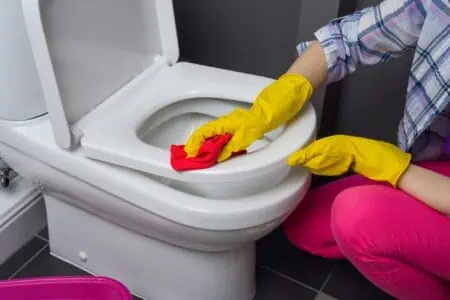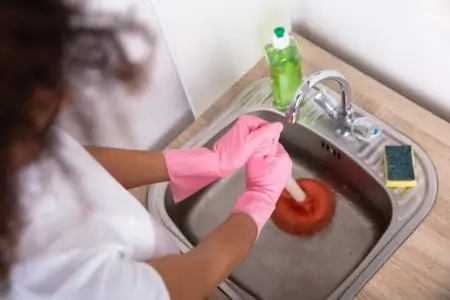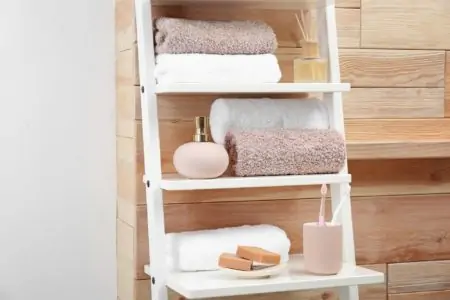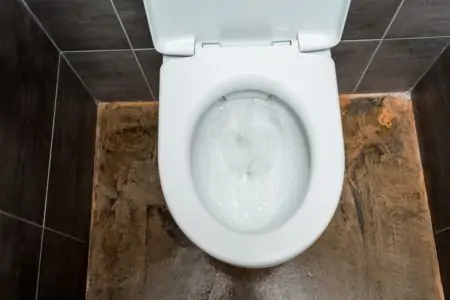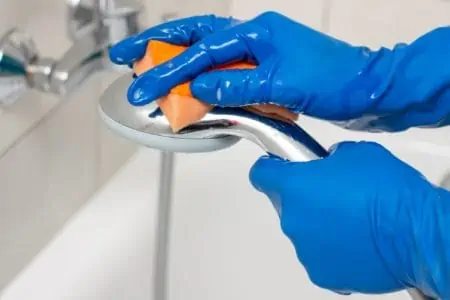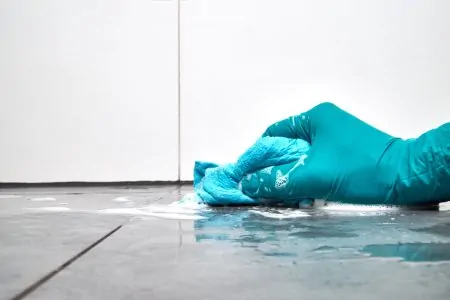The toilet seat may not be one’s favorite place in the home. But it’s a necessary one. As a spot often visited throughout the day, it can be uninviting when the toilet is filthy and stained.
If you’re wondering how to remove stains from toilet seats, then we can help. Soon, your bathroom will feel spa-like and super hygienic. And guests won’t be scared to use the toilet.
We’ll also share tips for keeping a toilet seat clean, whether it’s made from white plastic, porcelain, or ceramic. All in all, we’ve compiled tons of tips so you can ensure your bathroom and toilet remain sparkling and spotless.
Key Takeaways
- Remove stains from toilet seats using baking soda, vinegar, bleach, or Harpic.
- Toilet seat stains can be caused by hard water, urine, cleaning chemicals, mold, and colored sweat.
- For stubborn stains, try hydrogen peroxide, Borax, lemon juice, a pumice stone, or Coca-Cola.
- Keep toilet seats clean by using appropriate cleaners, cleaning daily, and closing the lid when flushing.
What Causes Stains on a Toilet Seat?
A stained toilet seat is more common than you think. But what is the cause of these unsightly stains? There are a few possibilities besides urine and poop stains.
Yellow Stains
Hard water often causes yellow stains. When the water splashes upwards, it can leave behind mineral deposits on the seat. Limescale in the water can also build up on the seat, leaving yellow, or sometimes brown, residue.
Urine stains are also very common. When urine splashes onto the seat and dries in, it leaves behind a stain.
Toilet seats can also become discolored from cleaning chemicals. Sunlight is also the culprit to yellowing.
Black Stains
While black stains aren’t as common, they can be caused by mold, soot, hard water, fumes, or even damaged pipes.
When hard water is left on a toilet seat for too long, it can turn from yellow to brown to eventually black.
If your toilet seat has been affected by kitchen, fireplace, or gas burner fumes, the residue can land on the toilet seat, causing black marks.
Black spots can also be due to mold. If the toilet seat has become moldy and you don’t clean it promptly, the mold can quickly spread.
Blue Stains
Are you wondering what the blue stains on your toilet seat are?
Firstly, it could be caused by wearing blue jeans. When blue denim contacts the toilet seat, it can leave behind dye residue.
Another cause could be chromhidrosis — a medical condition that produces colored sweat (1). This sweat can be black, green, blue, yellow, or brown.
Finally, blue stains on the toilet seat can occur when you put a blue cleaning solution in your toilet water. When this splashes up, it can leave blue residue behind on your toilet seat.
How To Remove Stains From Toilet Seats
If your toilet seat is stained, it’s no wonder you want to start cleaning. We’ll show you how to clean a stained toilet seat using two methods: one with bleach and one without.
- Time: 45 minutes (plus waiting time).
- Difficulty: Easy.
With Bleach
Removing stains from toilet seats is quick and easy with bleach. Just keep in mind that bleach is a corrosive substance, so if you want something non-toxic and safer, try the baking soda and vinegar method.
- Dilute the bleach: Dilute the bleach in a bucket of water according to the packaging instructions. If your bottle doesn’t have dilution instructions, mix ⅓ cup of bleach per gallon of room temperature water. Make sure the bucket is large enough to fit your toilet seat.
- Soak the seat: Remove the toilet seat from the toilet and soak it in bleach water for 15 minutes.
- Scrub: Use a bristled brush to scrub the seat clean and remove the stains. Continue soaking and scrubbing until you’ve removed the stains.
- Rinse: Rinse the toilet seat with water. It’s easiest to use your shower head to do this.
- Dry: Dry the toilet seat with a towel.
- Replace: Return the toilet seat to the toilet.
Warning
Bleach is corrosive, so wear gloves, eyewear, a mask, a long-sleeved top, and long trousers. You don’t want to get any bleach on your skin, nor do you want to breathe it in.
With Baking Soda and Vinegar
Baking soda and vinegar are an eco-friendly and safer way to remove stains. In our household, we prefer this method as it’s not corrosive, but it’s still extremely effective. Here’s how to clean a stained toilet seat with this powerful duo:
- Remove the toilet seat (optional): It’s easier to issue a deep clean if you completely remove the toilet seat, but it’s not necessary. The method remains the same whether you remove it or not, but you’ll be able to access the nooks and crannies more easily if you remove it.
- Make a baking soda paste: Dampen a cloth with water and sprinkle baking soda over the cloth. Rub the baking soda all over the toilet seat.
- Wait: Leave the baking soda on the seat for 15 minutes — longer if the stains are extremely stubborn. You can leave it for up to eight hours.
- Rinse: Rinse the baking soda paste off the toilet seat.
- Clean with vinegar: Pour distilled white vinegar into a spray bottle and spritz it all over the toilet seat. If you don’t have a spray bottle, pour it into a bowl and apply it to the seat with a cloth.
- Cover the seat: Cover the damp seat with vinegar-soaked paper towels and leave them on for two hours.
- Scrub: Scrub at the stains with a bristled brush or unused toothbrush. Add more vinegar as necessary. Scrub until the stains are gone.
- Rinse: Rinse the toilet seat with water.
- Dry: Dry the seat and return it if you have removed it.
Safety Tips
Don’t soak a wooden toilet seat in vinegar. Simply spray it on and rinse it. Soaking wood in liquid will damage the seat. It’s also vital that you don’t combine the bleach and vinegar methods, as these two cleaners can create chlorine gas (2).
How To Remove Harpic Stains From Toilet Seat
Harpic is a popular toilet cleaner, but unfortunately, it can leave behind stains. Thankfully, these stains aren’t permanent, though.
- Time: 20 minutes.
- Difficulty: Easy.
What You’ll Need
- Rubbing alcohol.
- Paper towels or cloth.
- Scrubbing brush or sponge.
- Spray bottle (optional).
1. Rinse the Toilet Seat
Use a cloth dampened in water to rinse the toilet seat. This removes all Harpic excess.
2. Apply Rubbing Alcohol
Fill a spray bottle with rubbing alcohol. If you don’t have a spray bottle, pour rubbing alcohol directly onto a paper towel or cloth.
Either spray the stained area with rubbing alcohol or place the paper towel or cloth over the stain. Leave it on for five to 10 minutes.
3. Scrub
Scrub at the stain using a sponge or scrubbing brush. Continue until the stain has lifted. Reapply more rubbing alcohol if necessary.
4. Rinse
Rinse the toilet seat with plain water to remove rubbing alcohol residue.
Tips for Removing Tough Stains From Toilet Seats
If you’ve tried the above stain removal methods to no avail — don’t fret. There are a few things you haven’t tried yet. Here are some more hacks that are worth a go:
- Hydrogen peroxide: Apply hydrogen peroxide to the stain and let it sit for 15 minutes before scrubbing. Rinse well. Just note to avoid this on vinyl toilet seats as it can cause damage.
- Borax: Dampen the stained area with water. Sprinkle Borax over the stains and let it sit for 20 minutes before scrubbing. Rinse well.
- Lemon juice: Mix lemon juice and your favorite essential oil in a spray bottle. Apply it to the stain and let it sit for 15 minutes before scrubbing. Rinse the area well and dry completely.
- A pumice stone: Sanding off the stain is another option but keep in mind that it can scratch the toilet seat. If you’re going to give this method a go, you can use a pumice stone, fine sandpaper, or 0000-grade steel wool.
- Coca-Cola: Since Coca-Cola is mildly acidic, it can clean stains, similar to how vinegar works. Pour it into a spray bottle and spritz the stains. Cover with a paper towel and leave it to soak for a few hours before scrubbing. Rinse well.
What To Do When Stains Won’t Come Out
When you’ve tried everything and are sick of being face-to-face without a stained toilet seat, it might be time to replace the entire seat.
Toilet seats typically cost between $15 and $40 — so they aren’t super expensive. Just be sure to choose one that will fit your toilet shape. You’ll find elongated or standard seats, so make sure it matches your existing toilet.
To replace the toilet seat, follow this method:
- Remove the existing seat: Locate the screws at the back of the toilet seat and unscrew them. Pull the toilet seat up. There will be dirt on the underside where the screws are, so give this a clean with some disinfecting wipes.
- Read your instruction manual: Not every toilet seat is the same, and your instructions may vary. Always read the instructions and check you have all the correct tools for installing the seat.
- Attach the fasteners: Typically, your new seat will come with two fasteners that connect the seat to the holes of the toilet. Once the holes have dried after you cleaned them, attach the fasteners and pop the toilet seat on.
- Secure the seat: Use the included nuts to tighten the bolts, securing the seat to the toilet.
How To Keep a Toilet Seat Clean
Toilet seat stains don’t have to be an inevitable part of your bathroom. Keep your toilet seat clean by implementing these amazing tips:
- Put cleaner in the tank: After you’ve cleaned your toilet, put toilet cleaner or a toilet tablet into the tank. This will run through the system, cleaning the bowl every time you flush it. It also keeps the siphon jets clean.
- Shut the lid: Every time you flush the toilet, shut the lid. Otherwise, the dirt, urine, and feces will spread through the air and land on your toilet seat, sink, bath, and even toothbrushes. We know, terribly disgusting.
- Automatic bowl cleaner: An automatic bowl cleaner can keep your toilet seat and bowl fresh between manual cleans.
- Use the right cleaners: Avoid aerosol cleaners, abrasive chemicals, and cosmetics from contacting the toilet seat. This can damage the material and make it more prone to staining. Be sure to use specialized cleaners if you have a wooden toilet seat.
- Clean your toilet daily: We know this seems like a lot, but cleaning the toilet bowl every day with a brush can cut down on dirt, debris, and other nasties within the bowl. Wiping down the seat daily with a disposable wipe can remove stains before they set. Deep clean your toilet every week.
FAQs
A Fresh Place To Sit
Stains on your toilet seat are very common. They occur when you flush the toilet, when hard water contacts the seat, or even if dye transfers from your clothes.
Thankfully, either bleach or a baking soda and vinegar combination works as a toilet seat stain remover. Just keep in mind — never ever mix these two methods. Vinegar and bleach can create chlorine gas.
Once you’ve removed the stains, be sure to maintain your toilet to avoid future stains. This includes cleaning your toilet regularly and closing the lid every time you flush.
